How do plants help clean & improve your air quality?
The process the earth goes through to clean the environment can be compared to that of any other living organism. The rainforest helps produce oxygen and remove large amounts of carbon dioxide, thus playing the role similar to any living organism's lungs by removing the toxins from the body. Aquatic plants assist by filtering the nutrients and removing the toxins in our environment as the water passes back into the streams, rivers and oceans. This process can be compared to the kidneys of most living organism, as they would filter impurities from the blood of the organism.
With the above stated, it is easy to see why plants are an absolutely necessary component of the evolutionary process that converted the planet earth from an extremely toxic environment into the living, self-regulating system it is today. The science behind how this multi-colored living, breathing beings keep us alive is very complex in nature, but the result and the importance of plants to our survival is rather simple to grasp. Oxygen is produced during the process known as photosynthesis. Photosynthesis is the natural process by which plants use light to change carbon dioxide and water into energy for itself. Without this process we would quickly deplete all the oxygen on this planet and cease to live.
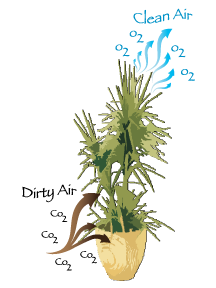
Here is how it all works.
The Roots:
Close studies of plants have revealed that individual plants create their very own micro ecosystem (including house plants). The area of soil surrounding the roots is filled with biological activity, and is known as the “Rhizosphere” which is directly influenced by the root system of the plant. This area contains many bacteria or Root Microbes that biodegrade the pollutants into structures that can be used as a source of food for the microbes directly and the plant.
The Leafs:
The leaf of the plant not only helps produce life sustaining oxygen, but it also plays a very important role in the maintenance of the overall health of the plant. The plants leaves act as a starting point for a process called Translocation, which is the process of moving substances throughout the plant. This is vital to the plant as it is moves the important nutrients from the plants leaves down to the roots system which also releases to the Rhizospere around the root system. This function is important in demonstrating how indoor house plants take the VOC's (Volatile Organic Chemicals) from the surrounding air and take them unchanged into the root system where they are broken down by the root and soil microbes.
This of course is just a very basic description to help you understand how plants help clean the air both indoors and outdoors. Plants outside in bulk work this process on a larger scale than those indoor house plants that you have individually positioned around your home. Your personal living space should be kept in mind when attempting to clean your indoor environment. Your personal breathing zone is roughly the area of 6 to 8 cubic feet surrounding you, so you should find an area in your home where you spend a great amount of time to place your house plants. This will allow them to purify the air you breathe in your personal zone.
-
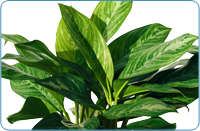 Aglaonema
Aglaonema
-
 Alpinia
Alpinia
-
 Cat Palm
Cat Palm
-
 Chinese Fan Palm
Chinese Fan Palm
-
 Cordyline
Cordyline
-
 Croton
Croton
-
 Dieffenbachia
Dieffenbachia
-
 Heliconia
Heliconia
-
 Dracaena Marginata
Dracaena Marginata
-
 Dwarf Schefflera
Dwarf Schefflera
-
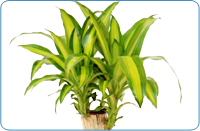 Mass Cane
Mass Cane
-
 Monstera
Monstera
-
 Emerald Queen Fern
Emerald Queen Fern
-
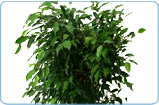 Ficus Benjamina
Ficus Benjamina
-
 Rubber Tree
Rubber Tree
-
 Hibiscus
Hibiscus
-
 Majesty Palm
Majesty Palm
-
 Philodendron
Philodendron
-
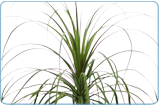 Ponytail Palm
Ponytail Palm
-
 Pygmy Date Palm
Pygmy Date Palm
-
 Sansevieria
Sansevieria
-
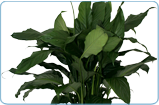 Spathiphyllum
Spathiphyllum
-
 Spindle Palm
Spindle Palm
-
 White Bird of Paradise
White Bird of Paradise
-
 Yucca
Yucca

